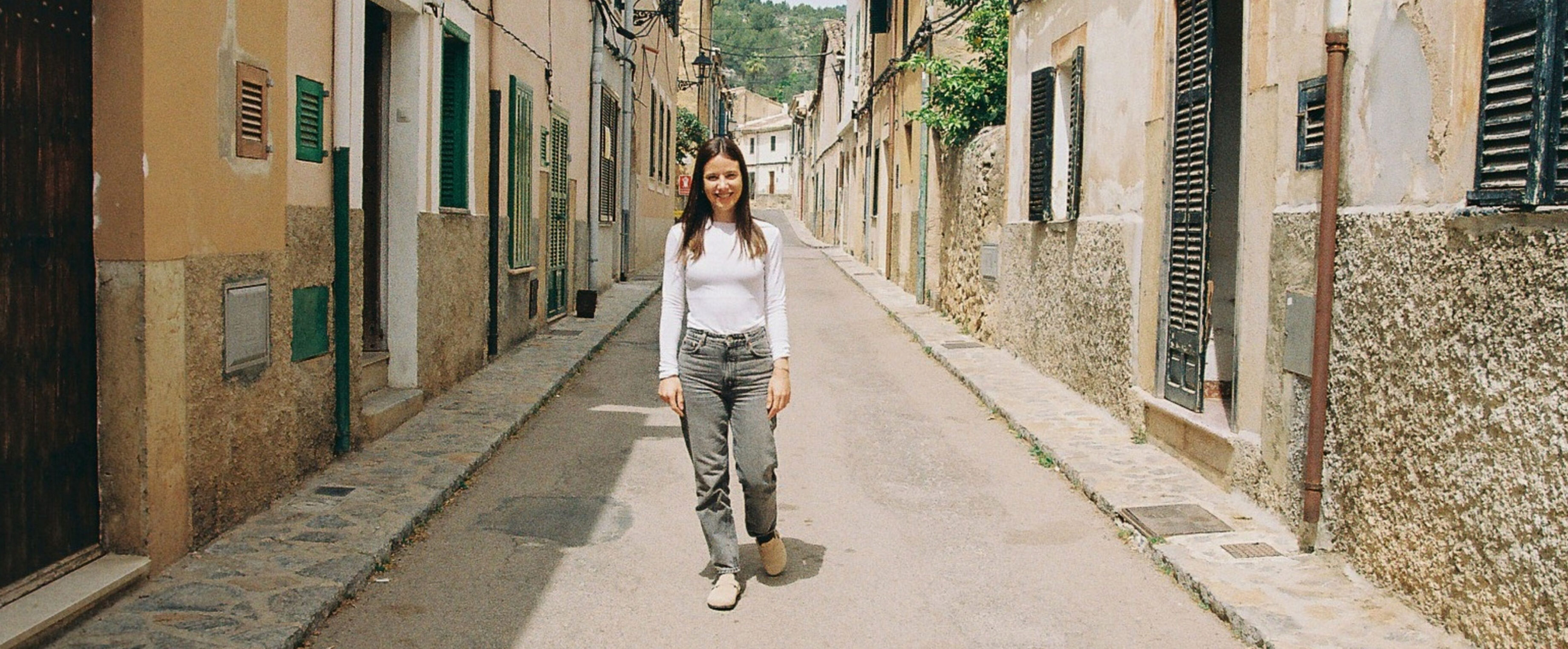An Islander’s Path to Personal Creative Discovery
Inspired by her Mediterranean homeland, jewellery artist, Lídia Bosch, knew she loved being creative from a young age. Born and raised in Mallorca, Lídia grew up absorbing the imagery around her: turquoise waters, salty air, the bleating of sheep at the nearby farm… In many ways, becoming an artist was inevitable for Lídia who found endless inspiration in the island’s mountains, country and coves. By the time she graduated university, Lídia knew she wanted creativity to have a bigger part in her life.
In the same village she grew up in, Lídia now invites students to her workshop. There, she passes down her appreciation for jewellery as a rewarding yet playful creative outlet, all the while, using fine quality recyclable materials to make pieces meant to last forever.

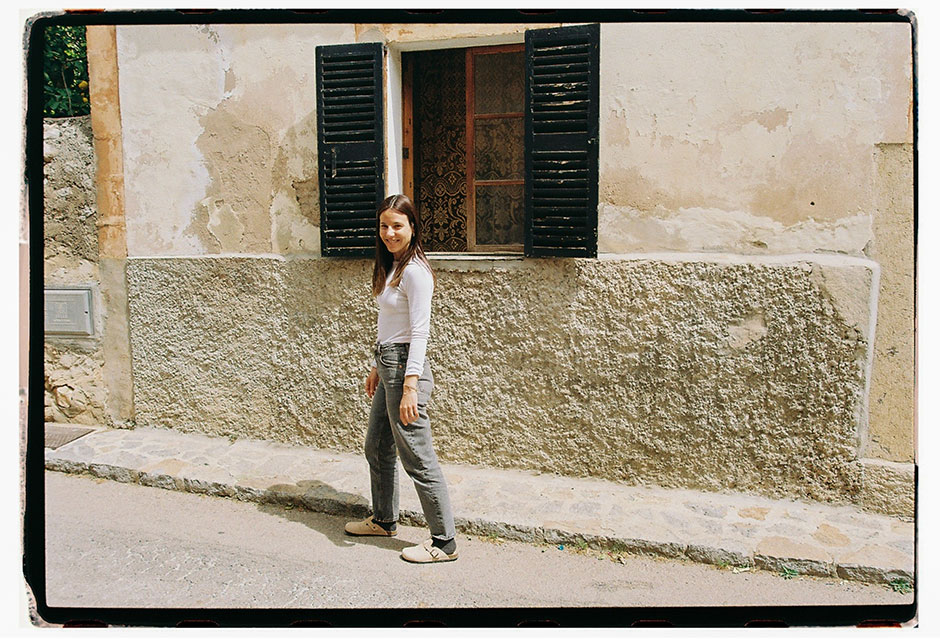
Hi Lídia, Can you start by introducing yourself? Where are you from and how did you come to start making jewellery?
Hi! My name is Lídia Bosch Bauçà and I was born and live in Esporles, Mallorca which is a small village in the Sierra de Tramuntana. I have always been interested in art (music, painting, poetry…) and in creating with my hands in general. I graduated from university with a degree in language and literature and worked for a few years as a teacher, but as time went on I found myself looking to explore more of my creative side. In the summer of 2017 I did an intensive course at the S’Estellera school in Palma. I loved it so much that I signed up for their regular classes where I learned all about the traditional and contemporary techniques of jewellery making. In 2018, I started my own project, Saona Joies and the rest is history!
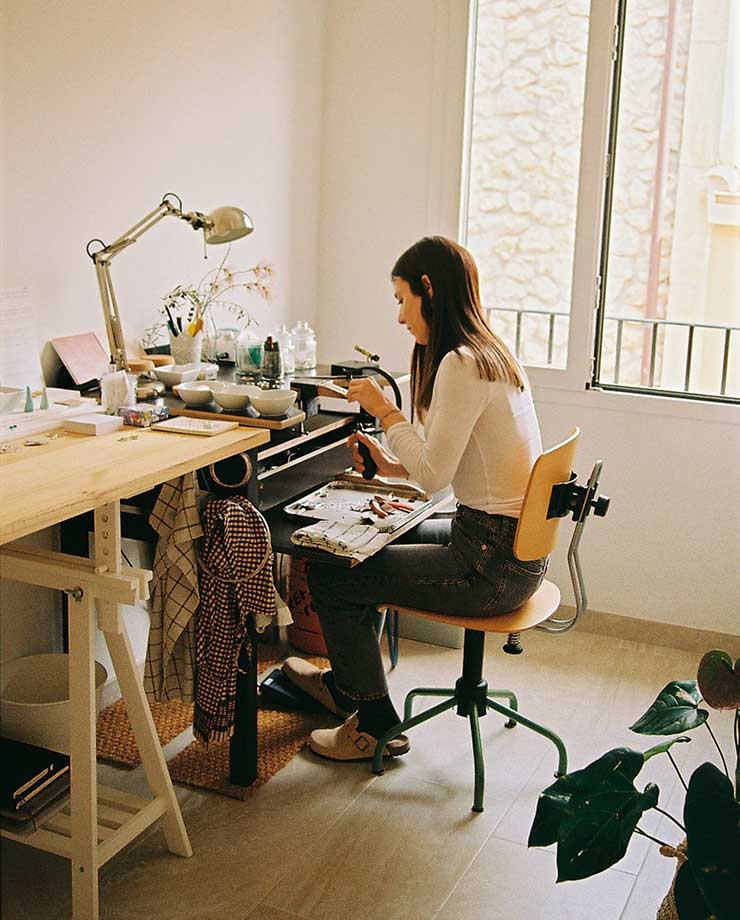
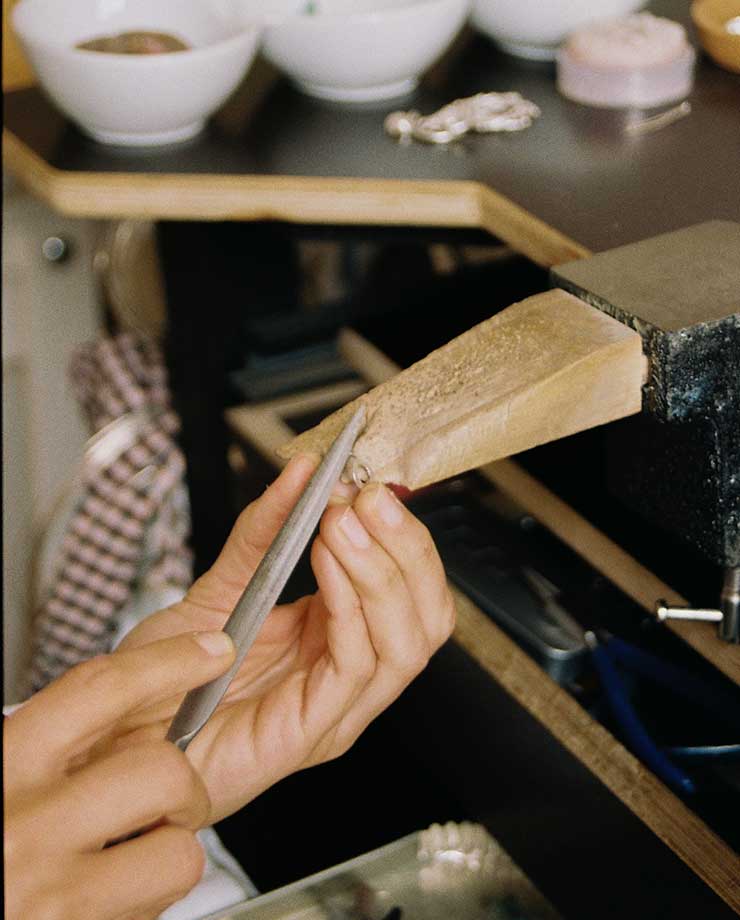
You told us previously that your collections are full of symbolism and many of them reflect traces of your Mallorcan culture and roots. How has being born and raised in Mallorca influenced your artistic style?
Growing up on an island, especially in a village in the Tramuntana, I feel very close to the mountains and the sea. I am a lover and observer of nature… noticing all the little things around me. When creating my first collection I actually started with some almond shells from my grandparents’ farm in Pollença. From that moment, I began to look at my environment and its organic matter as direct inspiration for my designs. Being creatively inspired in Mallorca is almost an inevitability. Going down to the local cove for a swim on a summer afternoon means walking through a mountain path where you can hear the bleats of sheep and their clinking bells, see the swirling trunks of olive trees, smell the salty air… The sensations I have been able to experience in this environment have greatly influenced my artistic style, its texture and forms.
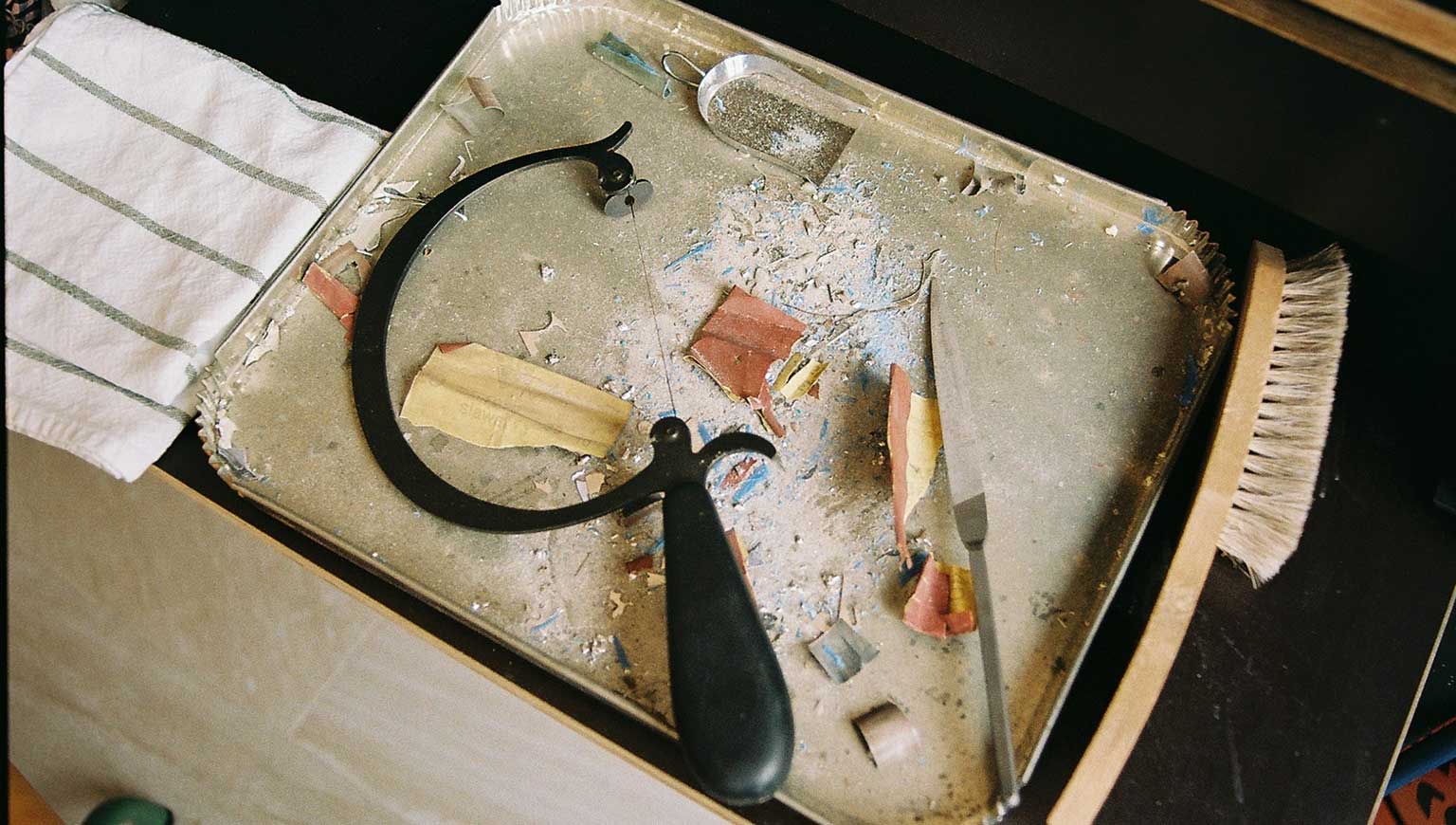
Can you explain a little about the “lost wax technique” you teach? What attracted you to this ancient tradition?
Lost wax is an ancient jewellery technique where a wax prototype is replaced by a metal. There are many techniques for sculpting jewellery wax and different types of specialised wax, from harder to softer. The wax you use depends on the type of piece you want to create. In my designs I use hard wax to carve shapes that need more precision and for more abstract pieces, I use soft wax.
Above all, it is a technique that feels very spontaneous – it really surprises you as you work it. Drip wax, for example, melts and creates unexpected shapes. It’s a really fun and relaxing way to work. It helps you easily connect with your creativity because it feels like play. When I turn on the music, close the workshop door and sit down to work with the wax, I experience it almost as a meditative process. Even if you don’t have any experience, you always get beautiful results and that’s why I want to share it with you.
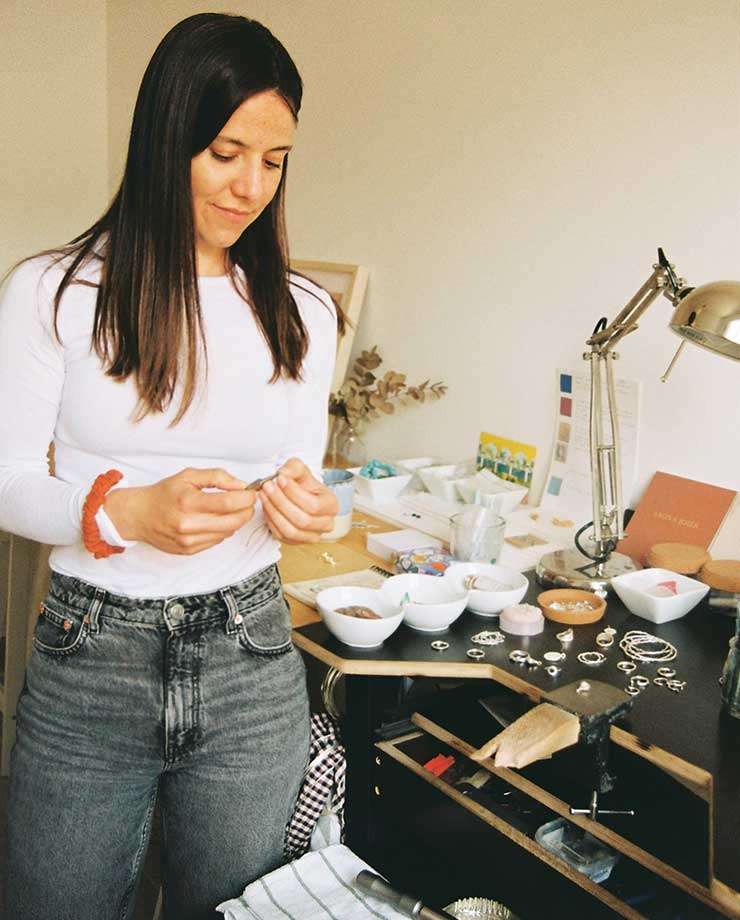

What do you hope to share through your workshop? What would you like students to take away from the experience?
I would like to demystify the process behind jewellery making. I think it’s often portrayed as something only highly skilled artists can do, but this technique is very intuitive. The wax casting technique allows students to feel like a real jeweller and learn an ancient technique that requires concentration but is also very rewarding. And, of course, apart from the experience, the students take home a beautiful ring created with their own hands that they can keep for life.
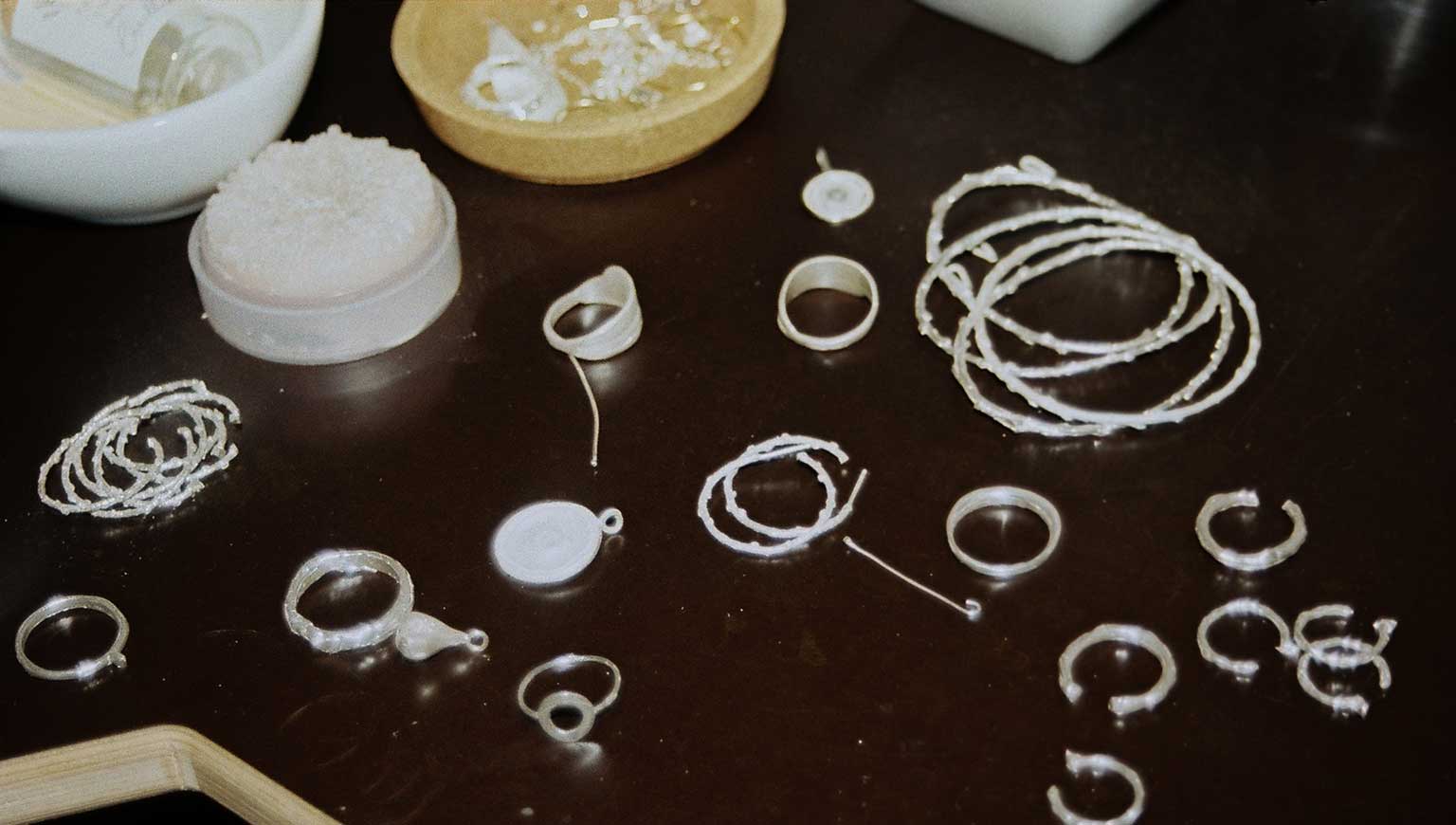
Your jewellery brand, Saona Joies, is committed to handcrafted, small-scale, sustainable, and local production. Why are these values so important to you?
For me, creating with my hands is something that personally enriches me. But beyond this, I believe in the importance of valuing handmade things, which require time, dedication and care. Handmade pieces are always unique and with the help of a local foundry, I create my pieces on a small scale so there are very few replicas.
I also believe deeply in environmental awareness and the importance of transmitting it in what I do. So, as much as possible, I try to make my business sustainable. The basis of my production are noble metals (silver and gold). I use nickel-free quality raw materials, bought from local suppliers, with the aim that the jewellery lasts over time with the added bonus that the precious metals can be recycled and reused. You can melt them as many times as you want to give it a second, third (etc)… life to your jewellery.
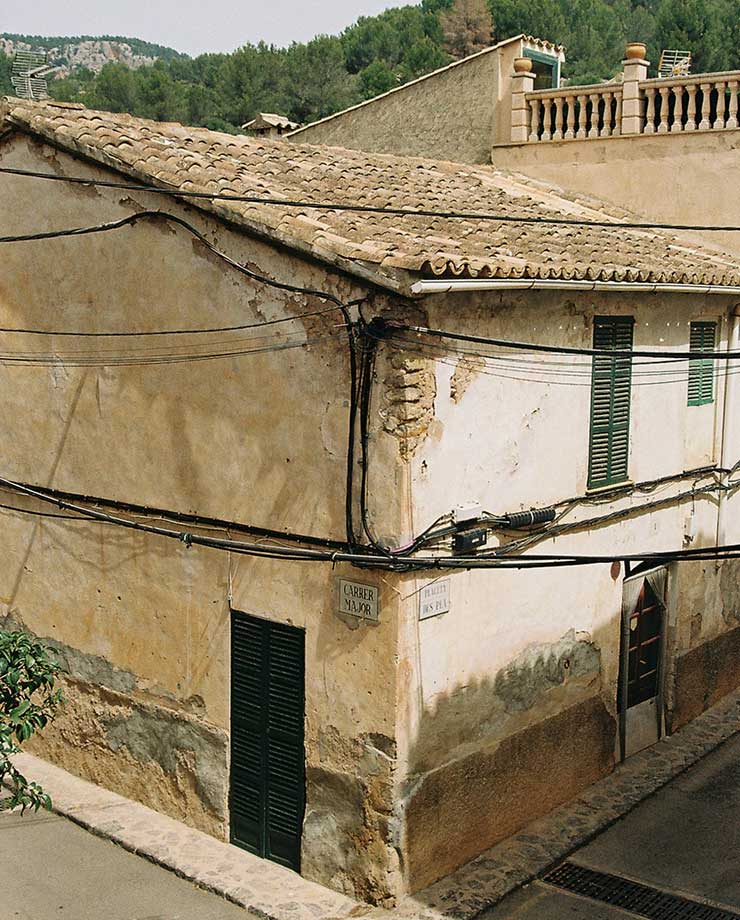


Are there any collaborations or showings you are looking forward to? Where can we find some of your current work on the island?
I have participated in many markets, fairs and exhibitions these past 6 years which I plan to continue. I have also just designed a new collection that will be released in collaboration with the Dionís Bennàssar Museum in Pollença. This is something I’m especially looking forward to. You can also check out my current work at the workshop. I always keep a few samples around or you can also find my pieces in shops in Deià, Esporles, Palma, Pollença, Sóller and Valldemossa.
Thanks for the interview, Lídia! We are so happy to have you.
For more info:
saonajoies.com
www.instagram.com/saonajoies
All Classes by
